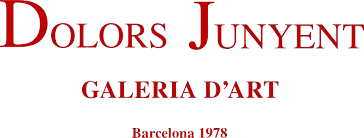Moragas, Tomàs
Tomàs Moragas
(Girona, 1837 - Barcelona, 1906)
Tomàs Moragas was born in Girona, but when he was very young his family moved to Barcelona. At the age of 13 he entered the Llotja School, where he studied under the direction of the Nazarene masters Claudi Lorenzale and Milà i Fontanals. He made friends with several classmates, such as Marià Fortuny, Jeroni Suñol, Ramon Tusquets and Josep Tapiró.
In 1858, after finishing his studies at the School of Fine Arts, he moved to Italy, following in the footsteps of Fortuny, despite not having a scholarship to finance his stay. He was accompanied by the sculptor Jeroni Suñol, and was later joined by Tapiró and Agrasot. All of them established their workshop in the same place as Fortuny. Moragas attended classes with his companions at the prestigious Giggi Academy, where they coincided with international artists. There they practiced drawing nude or clothed models, and also studied composition, working in drawing as well as watercolor and oil. During his leisure time, Moragas traveled all over the city of Rome and its surroundings, showing a great interest in popular themes, and made magnificent sketches of the Trastevere district, Ripetta and other towns near Rome.
Back in his studio, Moragas transferred the Roman scenes, popular characters and monumental ruins of ancient Rome into oil and watercolor paintings. These works were bought by art dealers in Paris and London. Moragas was part of the school of Rome, and he and Fortuny were actively involved in the cultural life of the city, attending gatherings and social activities.
In 1864, after achieving a certain stability and reputation, Moragas decided to spend some time in Barcelona. During this time, he received several important commissions and devoted himself to Catalan genre themes, which were very well received. In addition, he made several studies and portraits, some of them in miniature.
In 1866, Moragas returned to Rome to continue his training. His friend Fortuny asked him to work on some works to be exhibited in Madrid, along with some of his own paintings. Thus, Moragas exhibited in several workshops and studios, and in 1867 he received a first-class honorary mention at the National Exhibition of Fine Arts in Madrid, where he was a great success. The result was numerous commissions.
Moragas was also interested in orientalist themes. In the summer of 1867, a cholera epidemic forced him to move to Naples, where he was deeply influenced by the naturalistic work of the painter Domenico Morelli. On his trip, he visited the ruins of Pompeii and, that same year, due to an illness, he traveled to Ariccia, on the outskirts of Rome, where he recovered without ceasing to make sketches for future works. In December he returned to Rome fully recovered.
In January 1868, to better serve their dealers and visitors, Moragas and Fortuny set up their studios in Villa Pegnatoski, on the outskirts of Rome. Moragas' fame grew, and his work became increasingly appreciated.
In 1869, Moragas returned to Barcelona due to the illness of his fiancée's father and mother. Both died soon after, which accelerated his marriage. Moragas moved with his wife to Sant Boi de Llobregat, where he continued painting until he received the news of his father's death. Faced with these events, he decided to return to Rome to finish the pending commissions.
In February 1870, Moragas returned to Barcelona, and on January 1, 1871, his first son, Lluís, was born.
Showing the only result

